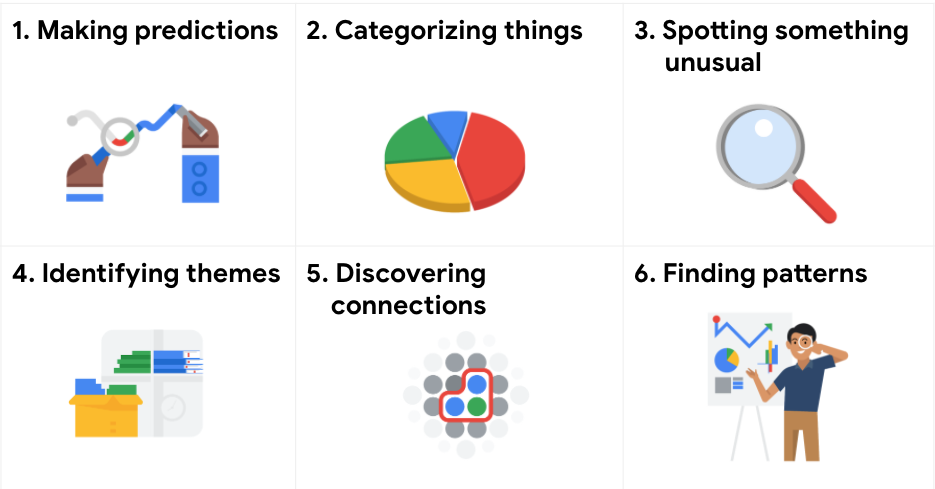Understanding the Role of Qualitative and Quantitative Data in Enhancing Business Insights
- Trí Quang
- 4 days ago
- 4 min read
Updated: 2 days ago
In today's competitive business landscape, data is essential for making informed decisions. Companies harness qualitative and quantitative data to gain insights into their operations, customer preferences, and market trends. Both types of data support different aspects of business strategies and can influence critical outcomes. In this post, we will explore the key differences between qualitative and quantitative data, how to collect them, and practical examples of their application in real-world business scenarios.

What is Qualitative Data?
Qualitative data is non-numerical information that highlights the qualities, characteristics, and attributes of a subject. It is often descriptive and helps businesses understand customer feelings, motivations, and behaviors. This type of data is gathered through methods such as focus groups, personal interviews, or social media text analysis.
For example, a coffee shop chain may wish to know why customers favor its new flavor. By holding focus groups or conducting interviews, the business can uncover customers’ emotional responses and motivations related to flavors, seasonal trends, and community engagement.
What is Quantitative Data?
Quantitative data, on the other hand, comprises numerical information that can be measured and analyzed statistically. This data is typically collected through a structured interviews, surveys, or polls. It provides a straightforward view of trends and patterns.
For example, a coffee shop can use quantitative data to track the number of cups sold, revenue by location, and customer visits per day. Upon analyzing this data, they might discover that sales increase by 30% on weekends compared to weekdays, allowing them to adjust staffing levels accordingly.
Tools for Collecting Qualitative Data
When collecting qualitative data, various methods can be employed:
Focus Groups: Small groups discuss their opinions and experiences on a specific topic. These discussions can reveal insights that surveys might miss. For instance, a fitness brand might use focus groups to learn about customer motivations for attending classes.
In-Person Interviews: One-on-one interviews allow for deeper conversations. Interviewers can explore responses and gather nuanced opinions, such as how a subscription service impacts a customer’s fitness journey.
Social Media Text Analysis: Businesses can analyze comments and posts to gauge public sentiment about their brand. For example, a travel agency may monitor social media reactions to a new vacation package, leading to better-targeted marketing.
Tools for Collecting Quantitative Data
Some popular tools for collecting quantitative data include:
Structured Interviews: These interviews use a fixed set of questions, ensuring consistency. This approach can help gather specific data points, like customer demographics or purchase frequency.
Surveys: Surveys, whether online or in-person, cover various topics and are pivotal for collecting customer feedback. A restaurant might survey diners about satisfaction levels to enhance the dining experience.
Polls: Quick online polls can yield rapid insights into customer preferences. A gym could use a poll on social media to ask followers about preferred class times, helping optimize scheduling.
Analyzing Movie Attendance Over Time
As a data analyst for a movie theater chain, you are tasked with tracking attendance trends. Instead of just looking at three months of data—which does not factor in holidays—you analyze a full year of attendance.
You find that average attendance is 550 per month. However, during holidays, attendance jumps to 1,800, indicating that promotional events around holidays boost participation. This quantitative insight could lead to planning more events during peak seasons.
Evaluating Profitability of the Concession Stand
Next, you investigate the concession stand's profitability. You determine that sales revenue is around $1,500 on average, but with costs barely covered, profit margins sit under 5%.
Noticing that customers typically spend $20 or less, you think about strategies to increase this amount. Introducing combo deals could lead to a 15% increase in average spend per visit, which would significantly improve profitability.
Understanding Evening Audience Preferences
To examine evening audience preferences, you gather qualitative insights via focus groups. You ask regular moviegoers what they like to watch at night, their snack choices, and what drives their attendance.
Insights from these discussions reveal that while action films are popular, many viewers prefer comedies for evening entertainment. Using this information alongside quantitative attendance data can guide the selection of evening showings, potentially boosting ticket sales by 20%.
The Importance of Combining Qualitative and Quantitative Data
Combining qualitative and quantitative data provides a fuller picture for decision-making. While quantitative data shows the "what," qualitative data explains the "why."
For instance, if attendance figures drop during specific months, qualitative feedback can highlight concerns about movie options or theater experiences. Understanding both aspects allows businesses to implement strategies effectively.
Final Thoughts
Both qualitative and quantitative data are critical pieces of the business puzzle. By recognizing their unique strengths and applying the right methods for collection and analysis, businesses can make informed decisions that promote growth.
For a movie theater chain, leveraging both types can lead to higher attendance, better profitability, and a richer understanding of customer preferences. In a rapidly changing business environment, mastering the art of data analysis is essential for success.
By harnessing the combined power of qualitative and quantitative data, businesses can uncover new growth opportunities and drive innovation.



Comments